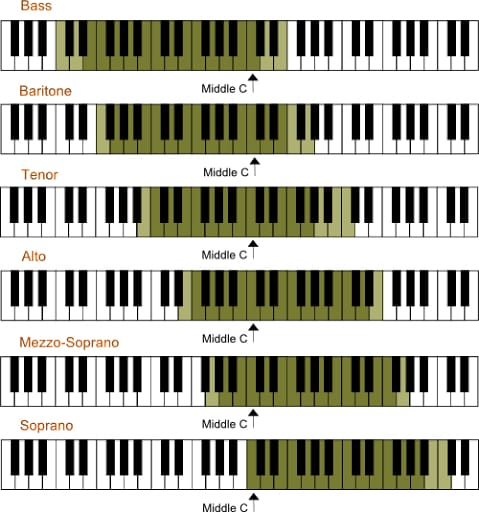VOCAL RANGE - And we’re back!! 🙂
Welcome everyone to my third blog which will be about Vocal Range. “LA LA LA LA LAAAAAA” Just kiddin’!
I’m pleased you’re here, so do read on as you may start to think a little more consciously about your voice and it’s capabilities from here on out.
So let’s unpack shall we? Anyone who is able to use their voice whether it is to speak, whisper, sing, laugh, shout or whatever else you’d like to name will most definitely find that there are also limitations to using their voice. You know for example – try and reach the lowest pitch possible in your vocal ability even when speaking and notice it will eventually become inaudible (sorry – what was that?). Same thing would happen if you tried it on the other spectrum too – try and reach the highest pitch possible by aiming to speak or sing a phrase at your highest capability. You will be met with a big red stop sign at some point, as we all would be within our own unique vocal range. We all possess both usable ’and unusable’ parts of our vocal range.
When we refer to a ‘Singer’s Vocal Range’ we are referring to the specific distance of range that they are able to sing efficiently from the lowest pitch to the highest pitch. Anything that is beneath or above their range that so happens to still make some kind of audible sound but at the same time is not strong enough to be distinctive and effective is not considered to be part of a singer’s vocal range as it is somewhat “unusable”.
Naturally, one who has more vocal training and experience tends to have a broader vocal range as they have gained awareness of how to access their full range effectively through technique and skill building. However, at the same time in some cases you will find individuals who are natural vocal geniuses that are gifted with such great vocal agility and ability.
There are various categories of voice that help to identify the particular range or ranges of a singer’s voice. Here they are listed below starting from lowest to highest vocal range:
Bass, Baritone,
Tenor, Alto, Mezzo-Soprano and Soprano.
Check out this image below to give you a visual idea of the different ranges of voice and where its usage is as seen over the octaves of the piano:

Thinking of vocal registers, I’d like you to think about the different pockets of pitch within the human voice and its ability to smoothly transition from one group of notes to another group of notes. This is known as the term ‘passaggio’, which is Italian for ‘passage’. A vocal range can consist of the lower register, middle register and the top register to name it simply. So when passaggio occurs it marks the end of one register and the beginning of another register. This can occur in both ascending and descending movements of the scale or octaves.
Each register will have its boundaries where vocal breaks can occur, however the aim is to have a seamless consistency of tone that is somewhat undetectable to the listener when transitioning through the passaggio. There are techniques to consider when smooth passaggio is to occur such as good breath control, being mindful of the natural tension and strain that can interfere with the control of the transition due to pushing the boundaries of the larynx and modifying vowel shapes in the process.


Anatomically, the vocal cords will elongate or shorten depending on whether the singer was ascending or descending in pitch. While this is happening the vocal folds will form into changed vibratory patterns that help the transitions of registers occur.
A commonly known register or term used is the chest register, which can be identified from a level of where the larynx is at its most natural position when the voice is used in speaking form. If a singer is able to move through the chest voice into the head voice, they will be met with a quality of tone that helps resonate a richer and warmer timbre known as the mixed voice. One’s vocal range will be effectively used if they are able to master the art of blending their chest and head voice tones. It enables the singer to be more versatile with their instrument and enhances their vocal capabilities.
I encourage you to scroll back up to the image displaying the different vocal ranges and see if you can work out which vocal range will suit you best! One that you are able to naturally sing well all the notes within the octaves displayed in colour. You will need the help of a piano of course 🙂
Have a beautiful, musical day!
